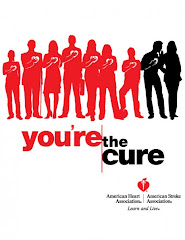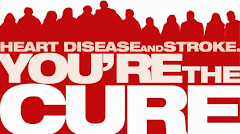From the Chicago Tribune: http://www.chicagotribune.com/health/sc-nw-heart-attack-0723-20100723,0,6976536.story
For heart attacks, quick care at lab may save lives
By Maura Lerner and Josephine Marcotty, McClatchy/Tribune news
July 23, 2010
MINNEAPOLIS —
If you're having a heart attack, you may not need an emergency room at all, according to a new study.
Researchers found that patients receive faster care, and are more likely to survive, if an ambulance crew takes them straight to a specialized hospital "cath lab," where doctors can act quickly to open their blocked arteries.
So far, only a fraction of hospitals use this system, which relies on specially trained paramedics to diagnose heart attacks without emergency room staff.
But the study, led by Dr. Kenneth Baran, a heart specialist at United Hospital in St. Paul, Minn., suggests that the process can cut the time needed to treat the most dangerous heart attacks from an average of 81 minutes to 36 minutes, and vastly improve the chances of recovery.
"Our times were phenomenal," Baran said. In some cases, "we had patients in with their artery open in 20 minutes."
In the study, published in the July issue of Circulation: Cardiovascular Quality and Outcomes, Baran's team also found that patients who went directly to the catheter lab were less likely to die in the hospital (3.9 percent) than those who came through the emergency room (7.5 percent).
Experts say that the minutes after a heart attack are crucial because muscle starts to die when oxygen is cut off. If the blockage can be cleared within 60 minutes or so, the heart attack may cause little permanent damage, they say.
Despite the study results, some experts warn that certain patients might need extra testing to rule out pulmonary embolism or other conditions.
"You have to be careful if it's not straightforward," said Dr. Alice Jacobs, a cardiologist with the Boston Medical Center and an adviser to the American Heart Association.
At first, some cardiologists who perform the catheter procedures were skeptical, Baran said, worried that they would face more false alarms and have to act as both emergency-room doctor and heart specialist. But when the results were so positive, he said, they became more accepting.
Timing: Hospitals strive to treat a heart attack patient within 90 minutes of arrival — frequently with an inflatable catheter to open blockages. By taking patients directly to a "cath lab," many have cut that time in half.
Friday, July 23, 2010
Thursday, July 22, 2010
Timely, Quality Care with AHA There
 We hear all the time that elected leaders value the American Heart Association's efforts to pass heart healthy policies in our state and nation - a result of decades of service from committed volunteers, the solid-science supporting the AHA's policy positions and the critical work the AHA performs in diverse communities every day. Through the Get With The Guidelines® program, the AHA works closely with hospital professionals to improve heart disease and stroke patient care utilizing the most recent scientific guidelines. In fact, over 2.2 million Heart and Stroke patients have benefitted from Get With The Guidelines®!
We hear all the time that elected leaders value the American Heart Association's efforts to pass heart healthy policies in our state and nation - a result of decades of service from committed volunteers, the solid-science supporting the AHA's policy positions and the critical work the AHA performs in diverse communities every day. Through the Get With The Guidelines® program, the AHA works closely with hospital professionals to improve heart disease and stroke patient care utilizing the most recent scientific guidelines. In fact, over 2.2 million Heart and Stroke patients have benefitted from Get With The Guidelines®!Legislators need to become aware of this important work so they may fully understand the impact of the association's mission and appreciate the expertise the AHA may bring to important issues associated with delivering timely, quality healthcare.
Follow the link below to contact your legislator about the American Heart Association's efforts to improve care in your community:
Timely, Quality Care in Illinois
Lawmakers are confronted with making very tough decisions these days and they are looking for solid partners to craft smart solutions. The more leaders learn about the ground-breaking work the AHA is performing to improve patient outcomes, the more they will go to the AHA as a partner in identifying solutions to today's challenges. Sending your message today can make a real difference:
Timely, Quality Care in Illinois
We encourage you to learn more about the Get With The Guidelines® program of the American Heart Association.
Check-out which hospitals in your area are successfully using this program.
As always, we thank you for your active voice as a member of the You're the Cure grassroots network. We can't spell CURE, without "U".
Thursday, July 15, 2010
Reading Food Nutrition Labels
 Learning how to read and understand food labels can help you make healthier choices. Here are some tips for making the most of the information on the Nutrition Facts label:
Learning how to read and understand food labels can help you make healthier choices. Here are some tips for making the most of the information on the Nutrition Facts label:Start here. Note the size of a single serving and how many servings are in the package.

Check total calories per serving. Look at the serving size and how many servings you’re really consuming. If you double the servings you eat, you double the calories and nutrients, including the Percent Daily Value (% DV).
Limit these nutrients. Remember, you need to limit your total fat to no more than 56–78 grams a day — including no more than 16 grams of saturated fat, less than two grams of trans fat, and less than 300 mg cholesterol (for a 2,000 calorie diet).
Get enough of these nutrients. Make sure you get 100 percent of the fiber, vitamins and other nutrients you need every day.
Quick guide to % DV. The % DV section tells you the percent of each nutrient in a single serving, in terms of the daily recommended amount. As a guide, if you want to consume less of a nutrient (such as saturated fat, cholesterol or sodium), choose foods with a lower % DV — 5 percent or less is low. If you want to consume more of a nutrient (such as fiber), seek foods with a higher % DV — 20 percent or more is high.
Here are more tips for getting as much health information as possible from the Nutrition Facts label:
-Remember that the information shown in these panels is based on 2,000 calories a day. You may need to consume less or more than 2,000 calories depending upon your age, gender, activity level, and whether you’re trying to lose, gain or maintain your weight. Find out your personal daily limits on My Fats Translator.
-In general, as you think about the amount of calories in a food per serving, remember that for a 2,000-calorie diet:
40 calories per serving is considered low;
100 calories per serving is considered moderate; and
400 calories or more per serving is considered high.
-There is no % DV shown for trans fat on the panel because the U.S. Food and Drug Administration (FDA) does not have enough scientific information to set this value. We recommend eating less than 20 calories or (less than two grams of trans fat) a day – that’s less than 1 percent of your total daily calories (for a 2,000-calorie-a-day diet).
-When the Nutrition Facts panel says the food contains “0 g” of trans fat, it means the food contains less than 0.5 grams of trans fat per serving.
-When the Nutrition Facts label says a food contains “0 g” of trans fat, but includes “partially hydrogenated oil” in the ingredient list, it means the food contains trans fat, but less than 0.5 grams of trans fat per serving. So, if you eat more than one serving, you could quickly reach your daily limit of trans fat.
In addition to the Nutrition Facts label, a lot of foods today also come with nutrient content claims provided by the manufacturer. These claims are typically featured in ads for the foods or in the promotional copy on the food packages themselves. They are strictly defined by the FDA.
The chart below provides some of the most commonly used nutrient content claims, along with a detailed description of what the claim means.


“Free” means a food has the least possible amount of the specified nutrient.
“Very Low” and “Low” means the food has a little more than foods labeled “Free.”
“Reduced” or “Less” mean the food has 25 percent less of a specific nutrient than the regular version of the food.
Subscribe to:
Posts (Atom)








